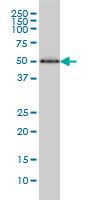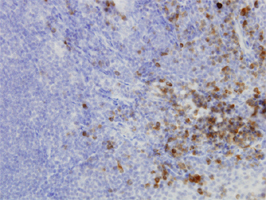ST1607 Anti-HERPUD1 Mouse mAb (2G7)
Productos recomendados
Descripción
| Replacement Information |
|---|
Tabla espec. clave
| Host |
|---|
| M |
| References | |
|---|---|
| References | Lass, A., et al. 2008. Int. J. Biochem. Cell Biol. 40, 2865. |
| Product Information | |
|---|---|
| Form | Liquid |
| Formulation | In PBS, pH 7.2. |
| Negative control | 293T cells |
| Positive control | HepG2 cells, Human tonsil tissue |
| Preservative | None |
| Biological Information | |
|---|---|
| Immunogen | A recombinant polypeptide corresponding to amino acids 74-181 of human HERPUD1, expressed as a GST fusion protein |
| Clone | 2G7 |
| Host | Mouse |
| Isotype | IgG2a |
| Physicochemical Information |
|---|
| Dimensions |
|---|
| Materials Information |
|---|
| Toxicological Information |
|---|
| Safety Information according to GHS |
|---|
| Safety Information |
|---|
| Product Usage Statements |
|---|
| Packaging Information |
|---|
| Transport Information |
|---|
| Supplemental Information |
|---|
| Specifications |
|---|
| Global Trade Item Number | |
|---|---|
| Número de referencia | GTIN |
| ST1607 | 0 |
Documentation
Referencias bibliográficas
| Visión general referencias |
|---|
| Lass, A., et al. 2008. Int. J. Biochem. Cell Biol. 40, 2865. |









